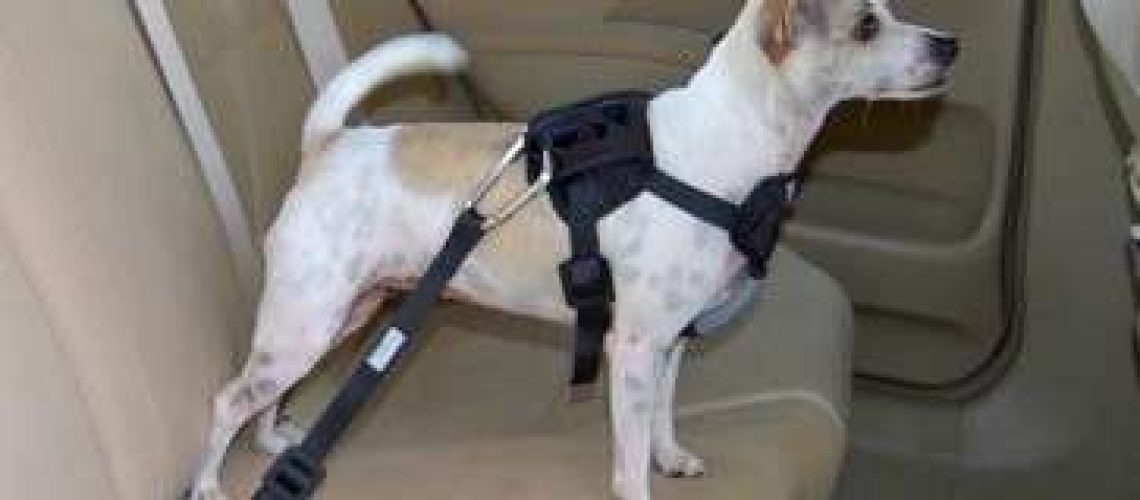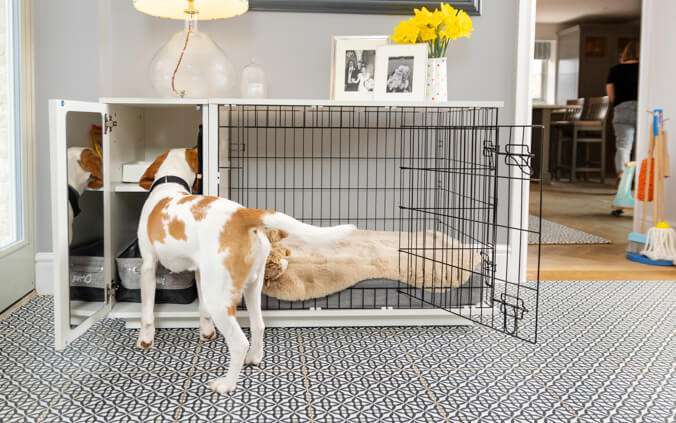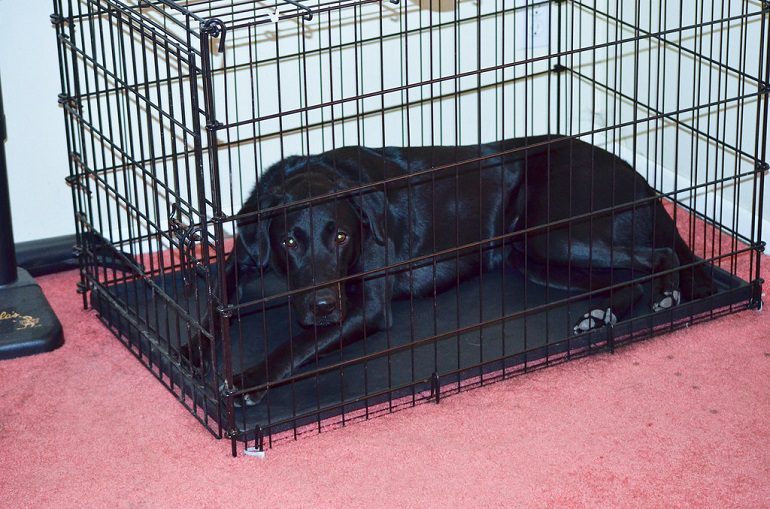Key Takeaways:
- Always use a dog-specific car restraint system to ensure the safety of both your pet and yourself.
- Avoid allowing your dog to roam freely in the car, as they can become a distraction and increase the risk of accidents.
- Secure your dog in the backseat or cargo area using a harness, crate, or barrier to prevent them from being thrown around during sudden stops or collisions.
- Ensure that the restraint system is properly fitted and adjusted to provide maximum comfort and protection for your dog.
- Never leave your dog unattended in a parked car, as they can quickly become overheated or anxious.
Are you a dog lover who enjoys taking your furry friend on car rides? If so, then understanding the best way to restrain your dog in your car for safety is essential. Not only will this knowledge protect your beloved pet, but it will also ensure the safety of everyone in the vehicle. Did you know that an unrestrained dog can become a dangerous projectile in the event of an accident? In fact, according to a study conducted by AAA, an unrestrained 10-pound dog can generate 500 pounds of force in a crash at just 50 miles per hour! By delving into this subject, you'll discover practical and effective methods to keep your canine companion secure and protected during car journeys. So let's explore the best ways to restrain a dog in your car and make every ride a safe and enjoyable experience for both you and your loyal companion.
The Importance of Restraint for Your Dog's Safety in the Car
When it comes to traveling with your furry friend, it is crucial to prioritize their safety. Just like humans, dogs can get injured in car accidents or sudden stops. To keep them safe, it is important to restrain them properly while driving. By doing so, you not only protect your dog from harm but also ensure that they don't become a distraction for the driver.
Unrestrained dogs can easily get thrown around inside the car during sudden movements, which can result in injuries to themselves and other passengers. They may also try to climb onto the driver's lap or interfere with their control of the vehicle, leading to accidents. Therefore, using proper restraints such as seat belt harnesses or crates is essential for your dog's safety and the overall well-being of everyone in the car.
Benefits of Restraint:
- Prevents injuries to your dog during accidents or sudden stops
- Reduces distractions for the driver
- Maintains a safe environment for all passengers
- Avoids potential legal consequences if an unrestrained dog causes an accident
Remember:
Your dog's safety should always be a top priority when traveling by car. Taking simple precautions and using proper restraints can go a long way in ensuring a safe and enjoyable journey for both you and your furry companion.
Safe Methods to Restrain Your Dog While Driving
Now that we understand why restraining our dogs while driving is important, let's explore some safe methods to do so. There are several options available depending on your dog's size, behavior, and comfort level.
One popular method is using a seat belt harness specifically designed for dogs. These harnesses attach to the car's seat belt system, providing a secure and comfortable restraint for your dog. They allow your furry friend to sit or lie down comfortably while preventing them from moving around excessively during the journey.
If your dog prefers a more enclosed space, using a crate or carrier can be an excellent choice. Make sure to select a crate that is appropriate for your dog's size and provides enough ventilation. Secure the crate in the car using straps or other restraints to prevent it from sliding or tipping over during sudden movements.
Safe Methods of Restraint:
- Seat belt harnesses designed for dogs
- Crates or carriers secured in the car
- Using specialized pet travel crates with built-in safety features
Tips:
Before embarking on a journey, introduce your dog to their restraint system gradually. Allow them to get accustomed to it by taking short practice trips before attempting longer journeys. This will help them feel more comfortable and reduce any anxiety they may have about being restrained.
How a Seat Belt Harness Keeps Your Dog Secure During Car Rides
A seat belt harness is an effective way to keep your dog secure and protected during car rides. These specially designed harnesses are equipped with features that ensure both comfort and safety for your furry friend.
A seat belt harness typically consists of adjustable straps that can be securely attached to the car's seat belt system. The harness fits snugly around your dog's body, distributing any impact force evenly in case of sudden stops or accidents. This helps minimize the risk of injury by reducing the chances of your dog being thrown around inside the vehicle.
Additionally, seat belt harnesses often have padded chest plates and straps to provide extra comfort for your dog. The padding helps prevent any discomfort or chafing that may occur during the journey. Some harnesses also have reflective strips or bright colors, making your dog more visible in low-light conditions.
Features of a Seat Belt Harness:
- Adjustable straps for a secure fit
- Padded chest plates and straps for comfort
- Reflective strips or bright colors for visibility
Tips:
When using a seat belt harness, make sure to adjust it properly to ensure a snug fit without restricting your dog's movement or causing discomfort. Regularly inspect the harness for any signs of wear and tear, and replace it if necessary to maintain its effectiveness.
Recommended Crates or Carriers for Traveling with Dogs
If you prefer using a crate or carrier to restrain your dog while traveling by car, it is important to choose one that is suitable for their size and provides a safe and comfortable environment. Here are some recommended options:
1. Wire crates: These crates are sturdy and allow good airflow. They come in various sizes, making them suitable for different breeds of dogs. Look for crates with secure latches and doors that can be easily opened and closed.
2. Plastic carriers: Plastic carriers are lightweight yet durable options for smaller dogs. Make sure the carrier has proper ventilation holes on all sides to ensure adequate airflow. Check if the carrier has a secure locking mechanism to prevent accidental opening.
3. Soft-sided carriers: Soft-sided carriers are convenient for short journeys with small dogs. They are lightweight and easy to fold when not in use. Look for carriers with sturdy zippers and reinforced stitching for durability.
Recommended Crates or Carriers:
- Wire crates
- Plastic carriers
- Soft-sided carriers
Tips:
Before using a crate or carrier, introduce your dog to it gradually. Place their favorite toys or treats inside to create a positive association. Make sure the crate or carrier is properly secured in the car to prevent it from shifting during the journey.
The Dangers of Allowing Your Dog to Roam Freely in the Car While Driving
Allowing your dog to roam freely in the car while driving can be extremely dangerous for both them and everyone else on the road. Here are some reasons why this practice should be avoided:
1. Distraction: Unrestrained dogs can easily become distractions for the driver. They may climb onto the driver's lap, block their view, or interfere with their control of the vehicle. This can lead to accidents and put everyone's safety at risk.
2. Injury risk: In case of sudden stops or accidents, unrestrained dogs can get thrown around inside the car, potentially causing serious injuries to themselves and other passengers. They may collide with hard surfaces, get crushed by objects, or even be ejected from the vehicle.
3. Airbag hazards: Airbags are designed for human occupants and can pose a significant risk to dogs if they deploy during an accident. The force of an airbag deployment can cause severe injuries or suffocation for a dog who is not properly restrained.
Dangers of Allowing Dogs to Roam Freely:
- Distracts the driver
- Risk of injury to the dog and other passengers
- Airbag hazards
Tips:
Always make sure to restrain your dog properly while driving. It is not only for their own safety but also for the safety of everyone in the car and on the road. By doing so, you can avoid potential accidents, injuries, and legal consequences.
Using Barriers or Gates to Keep Your Dog Safe and Prevent Distractions While Driving
If you have a larger dog or prefer them to have more space during car rides, using barriers or gates can be an effective way to keep them safe and prevent distractions. These barriers create a designated area for your dog within the car, ensuring they stay away from the driver's seat and maintain a secure position.
There are several types of barriers or gates available that can be installed in different areas of the car, such as behind the rear seats or between the cargo area and passenger compartment. Some barriers are adjustable and can fit various car models, while others are specifically designed for certain vehicles.
Barriers or gates are typically made of sturdy materials like metal or high-quality fabric. They provide a physical barrier between your dog and the driver's area, preventing any unwanted interactions or distractions. It is important to choose a barrier that is strong enough to withstand your dog's weight and size.
Benefits of Using Barriers or Gates:
- Keeps your dog in a designated area
- Prevents distractions for the driver
- Maintains a safe environment for all passengers
- Fits various car models (adjustable options)
Tips:
Before purchasing a barrier or gate, measure your car's dimensions to ensure a proper fit. Follow the manufacturer's instructions for installation and regularly check the barrier for any signs of wear or damage. Remember, using barriers or gates is not suitable for all dogs, especially those who may become anxious or agitated when confined.
In conclusion, it is important to restrain your dog in the car for their safety and the safety of others. Using a seat belt harness or a crate can help prevent distractions and injuries during car rides, ensuring a safe journey for everyone involved.
What is the safest way to restrain a dog in a car?
A harness designed for the safety of dogs in cars, which is connected directly to the seatbelt of the vehicle. It is recommended to use crash tested crates and harnesses for the best safety measures when restraining dogs in cars.
How should you restrain your pet when traveling in a car?
In case of a severe accident, the most recommended option is to secure your pet in the back seat. The safest choice would be to use a specific seat belt or harness designed for dogs, as a regular seat belt may not fit them properly. By using the appropriate dog car harness, you can ensure the safety of any sized dog while traveling in your car.
How do you restrain a dog in a car without a crate?
If you can't use a crate, consider using a safety harness that can be buckled directly into the seat belt buckle to secure your dog in the back seat.
How do I keep my dog safe on a long car ride?
The most secure method of traveling with a dog in a car is to place them in a crate. If this is not possible, using a seat belt designed for dogs is another option. It is not safe to allow a dog to freely move around the car, even though we may have observed dogs sticking their heads out the window while their owners drive by.
Should you buckle your dog?
Similar to children, the backseat is the safest place for a dog to be secured. However, if the backseat is occupied by human passengers, there are now excellent options available for the cargo area.
Do dog seatbelts work?
Using a safety harness that has a loop for seat belts to click through is a common method of properly restraining your dog in the car. However, not all dog seat belts are the same and some can actually cause your dog to be thrown off the seat, as shown in a study conducted by the Center for Pet Safety®.

















